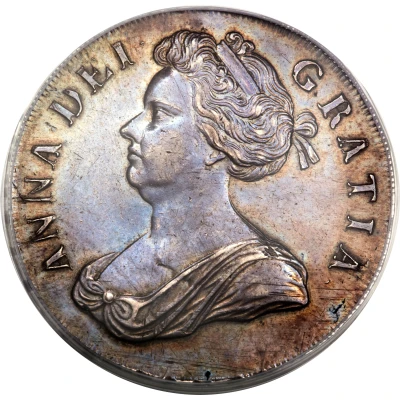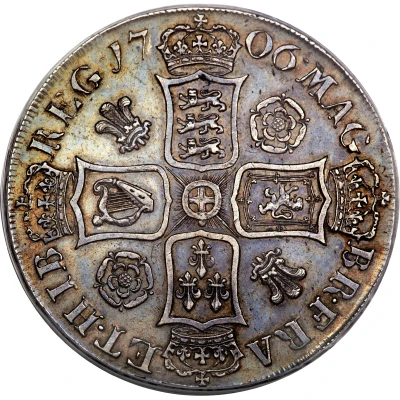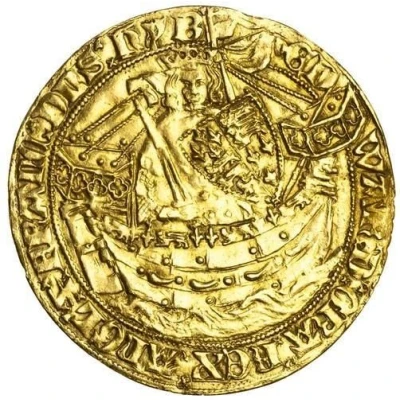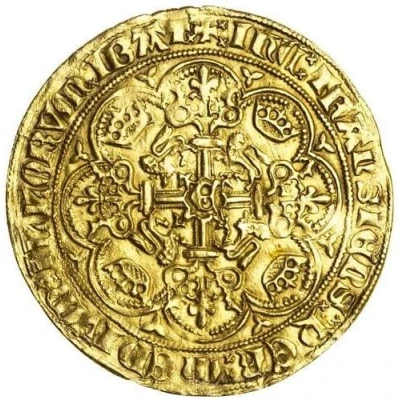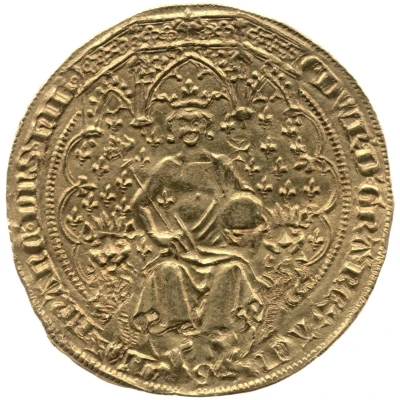
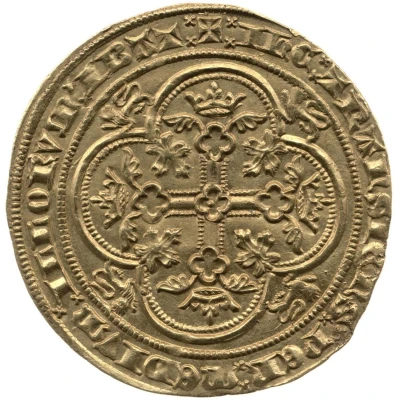

© Trustees of the British Museum
1 Double-florin - Edward III 3rd coinage; 1st period ND
1344 year| Gold | 6.99 g | - |
| Issuer | England (United Kingdom, British Overseas Territories and Crown Dependencies) |
|---|---|
| King | Edward III (1327-1377) |
| Type | Standard circulation coin |
| Year | 1344 |
| Value | 2 Florins (0.3) |
| Currency | Pound sterling (1158-1970) |
| Composition | Gold |
| Weight | 6.99 g |
| Shape | Round (irregular) |
| Technique | Hammered |
| Demonetized | Yes |
| Updated | 2024-10-08 |
| Numista | N#326038 |
|---|---|
| Rarity index | 100% |
Reverse
Cross with quatrefoil and pellet at centre, quatrefoils and leaves at the terminals, a crown at the end of each terminal; all within a double quatrefoil with leaves at the cusps and leopards couchant in the quarters.
Script: Latin (uncial)
Lettering: IhC TRANSIENS MEDIVM ILLORVM IBAT
Lettering (regular font): IHC TRANSIENS MEDIVM ILLORVM IBAT
Translation: But Jesus passing through their midst went His way
Comment
House of Plantagenet (1154-1399), Edward III (1327-1377), 3rd coinage (1344-51), 1st period (1344), gold double-leopard or double-florin.Struck at the Tower mint, London between January and July 1344. These coins were struck to a standard weight of 108 grains.
Interesting fact
One interesting fact about the 1 Double-florin - Edward III (3rd coinage; 1st period) ND (1344) coin is that it was minted during a time of great economic change in England. The coin was introduced as part of a new currency system implemented by King Edward III in 1344, which aimed to stabilize the English economy and simplify trade transactions. The coin's design, featuring a crowned king on one side and a cross on the other, symbolized the power and authority of the English monarchy. Despite being made of gold, the coin was not widely accepted outside of England, and its value varied depending on the region and the merchant's willingness to accept it. This highlights the challenges of standardizing currency across different regions and the importance of having a stable and trustworthy monetary system.
